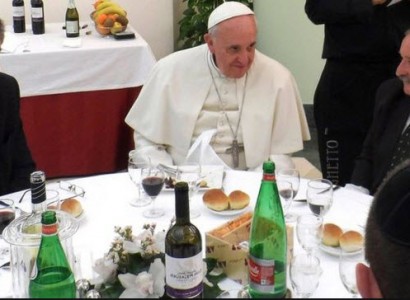
Pope Francis will visit the Auschwitz-Birkenau concentration camp in July, as part of World Youth Day. This trip coincides with his five day trip to Poland, arriving on July 27 and departing July 31. Pope John Paul II, himself Polish, became the first pope to visit the camp. Benedict XVI visited in 2006. The US Holocaust Museum estimates that the SS had murdered at least 960,000 of the 1.1m Jews deported to the camp. Of the 23,000 Romani, the Nazis murdered 21,000. Other victims included 15,000 Poles, 15,000 Soviet prisoners of war. And 10-15,000 members of other nationalities perished (including Czechs, Yugoslavs, Germans, Austrians and French). On June 7, 1979, Pope John II made a five-hour visit to the camp. He prayed before a stone crucifix in memory of the Catholic priest Maksymilian Kolbe, prisoner number 16670, who the SS murdered in 1941. Kolbe volunteered to die, so Franciszek Gajowniczek, a father of five might live. Gajowniczek, the Polish army sargeant had been chosen to die in an Auschwitz dungeon called the “hunger bunker,” after a prisoner had escaped. Kolbe pleaded, ‘I want to take the place of this man. He has a wife and a family. I have no one. [...]
The post Pope Francis to visit Auschwitz death camp in July appeared first on Religious Reader.
Continue Reading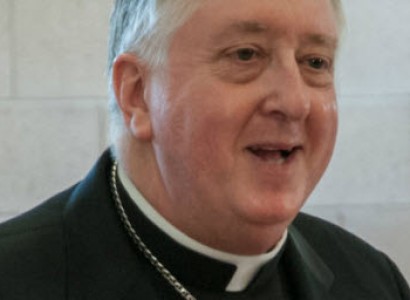
The US Conference of Catholic Bishops hopes that a national dialogue with Muslims can change perceptions of Islam in the United States. In the past, efforts to foster Catholic-Muslim have succeeded at local levels. But in the face of rising Islamophobia, Bishop Mitchell T. Rozanski, of Springfield in Massachusetts, who chairs the committee, said a wider conversation was needed. “As the national conversation around Islam grows increasingly fraught, coarse and driven by fear and often willful misinformation, the Catholic Church must help to model real dialogue and good will,” he said in a statement. This national dialogue will begin at the start of 2017. In the Midwest, Catholic-Muslim dialogue began in 1996 and meets once a year. The co-chairs represent both faiths. One document produced explored how Muslims and Catholics interpret revelation. In the Mid-Atlanic, a representative from The Islamic Circle of North America co-chairs the yearly meetings that started in 1998. Out in California, a number of Islamic Societies join the yearly dialogue which began in 1999. They co-published Friends and Not Adversaries: A Catholic-Muslim Spiritual Journey in 2003. A 2014 directive reaffirmed a commitment to Catholic-Muslim dialogue. How Catholics view other faiths changed following the Second Vatican Council. [...]
The post A new national Catholic-Muslim dialogue hopes to counter Islamophobia in the United States appeared first on Religious Reader.
Continue Reading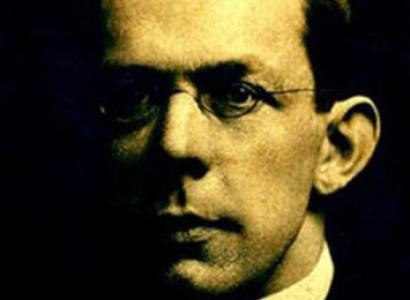
A campaign to canonise a Catholic priest who stayed on the RMS Titanic instead of fleeing remains ongoing despite renewed interest in his story. The story of Father Thomas Byles and his acts of selflessness, however, deserves re-telling. Roussel Davids Byles was born in 1870 to a Protestant family in Leeds. His father, Reverend Dr. Alfred Holden Byles and mother Louisa Davids also had six other children. He excelled at mathematics and gained a scholarship to Balliol School, Oxford. When at Oxford, Byles gravitated towards the Church of England. His younger brother, William, however, converted to Catholicism first. In 1894, he had a conditional baptism (sub conditione) at St. Aloysius Church in Oxford. Upon entering the Catholic faith, Roussel adopted the name of Thomas. After spending two years in Rome, Byles became the ordained priest of St Helen’s Church, Chipping Ongar, Essex in 1904. In 1912, he had boarded the ship to attend the wedding of his younger brother William, in New York. This last minute decision to board the Titanic instead of a different ship cost him £13 (roughly £1,100 today). His second class ticket was number 244310. His duties included performing mass for second and third class passengers. [...]
The post Why do people want Titanic priest Father Thomas Byles sainted? appeared first on Religious Reader.
Continue Reading
Pope Francis lit the Christmas tree and nativity scene in Assisi. From a distance in the Vatican, he performed the ceremony online on December 7. In attendance at the lower piazza of the Basilica San Francesco were 31 refugees from Afghanistan, Cameroon, Nigeria and Syria. The other invited guest included the Naval officer who assisted in their rescue. All stood alongside local residents as the Christmas tree lit up. #Assisi,accensione delle luci del presepe: "Anche quella volta siamo arrivati in tempo per salvare una vita in mare" pic.twitter.com/uF4abIu5zc — Marina Militare (@ItalianNavy) December 6, 2015 Papa Francesco accende le luci del presepe di #Assisi. Comandante nave #MarinaMilitare porterà la sua testimonianza pic.twitter.com/7hoMEVj0H2 — Marina Militare (@ItalianNavy) December 6, 2015 At the foot of the tree stands a nativity scene crafted into the boat used by those who arrived at the Italian island of Lampedusa from Tunisia in 2014. The Italian State Railway and Italian Navy also handed out toys to families in need. Staff at the Basilica, the Conventual Franciscan Friars, dedicated the tree and “this Christmas to immigrants“. In a translated address, according to Vatican Radio, Francis thanked the Coast Guard. He said: “I would like to thank the [...]
The post Pope Francis lights nativity scene in support of refugees appeared first on Religious Reader.
Continue Reading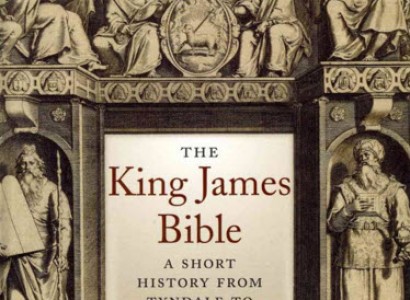
A rare copy of the King James Bible, dating back to the 17th Century, reappeared in Wales. A moment of curiosity from St Giles Parish Church’s vicar Reverend Dr Jason Bray in Wrexham led to its rediscovery. The National Library of Wales later confirmed its authenticity. Dr Bray told the Daily Post that “The title page and the last page are missing but other than that it’s in good condition”. The first edition King James Bible dates back to 1611 and is one of just 200 copies known to still exist. It is also known as the Authorised Version (AV) of the bible in English Other English language bible translations did exist before the seventeenth century. Yet, politics often got in the way of a standardised translation. The 1408 Constitutions of Oxford made biblical translations in England forbidden. This ban attempted to prevent a rise in English “Lutheranism”. Only the educated classes had access to the authorised translation of the bible – St Jerome’s Vulgate. William Tyndale (1494–1536) left for Germany in 1524 hoping to translate the New Testament into English. It took two years for a complete translation to appear in England and Scotland. His first attempt failed after [...]
The post Rare first edition of King James Bible from 1611 found in Wales appeared first on Religious Reader.
Continue Reading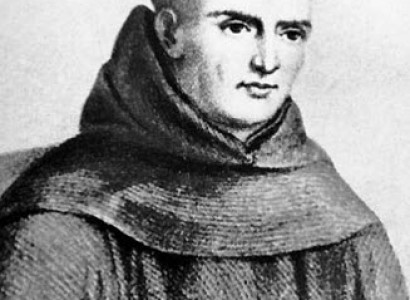
Over the summer, Pope Francis apologised for the “Many grave sins were committed against the native people of America in the name of God.” “I humbly ask forgiveness, not only for the offense of the church herself, but also for crimes committed against the native peoples during the so-called conquest of America,” the pope said. But his decision to canonise Father Junípero Serra, on his first visit to the United States next week, has angered many groups. An online petition against the canonisation has gained over 10,000 signatures. Many of the counter voices are descendants of those colonised. For Ron Andrade, executive director of the Los Angeles City/County Native American Indian Commission, and of the Luiseño tribe, said Serra “decimated 90% of the Indian population”. Serra (1713-1784), was an ordained Franciscan priest and professor of theology by the age of 24. By 1749, Serra accompanied other Franciscans dedicated to missionary work in Mexico. He also preached, heard confessions, and assisted at Mexico City’s College of San Fernando. In 1767, Spain founded the first mission in California. Estimates put the Native American population at about 310,000; yet in under a century, that figure declined at a rapid rate, alongside cultural shifts. Spain’s [...]
The post Why is Junípero Serra’s canonisation so controversial? appeared first on Religious Reader.
Continue ReadingThe story of Jan Karski’s bravery in the Second World War came to life in a recent documentary in his native Poland. Sławomir Grünberg’s ‘Karski and the Lords of Humanity‘ (Karski i władcy ludzkości), blends archival footage, animation, and interviews to retell a story of wartime heroism. Born in the Polish city of Łódź in 1914, the youngest of eight Catholic children, Jan Romuald Kozielewski later adopted the nom de guerre of Karski. The city exposed a young Karski to multiculturalism. He found himself living alongside Germans, Jews, Russians and Poles. That exposure to Jewish life created an affinity within Karski. Academic pursuits helped him join Poland’s diplomatic service. When interning for the foreign minister, he found himself in Nuremberg, Germany. Karski saw the Nazi propaganda rallies in 1933 and the toxicity of Nazi antisemitism. It created a deeper sympathy for their plight and a sense of foreboding. Other diplomatic assignments brought him to London and Paris. But the outbreak of war brought a career change as he enlisted in the army in 1939. In a few short weeks, invasions from German then Soviet troops divided Poland. The Soviets arrested Karski and placed him in a detention camp; but a [...]
The post Jan Karski: the Catholic spy who warned about the Holocaust in 1942 appeared first on Religious Reader.
Continue Reading